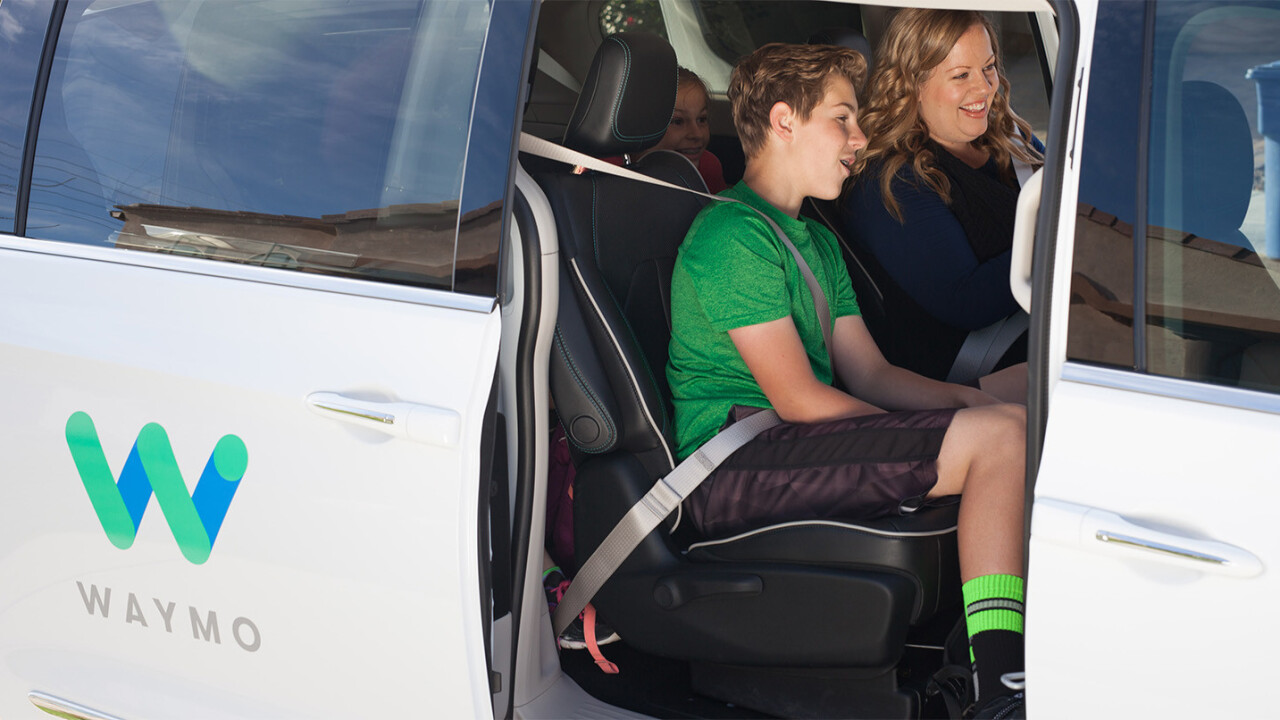Perhaps the most highly touted benefit of driverless car technology is its potential to prevent millions of deaths by eliminating the cause of 94 percent of all accidents: human error. But that’s not the only way robot-driven vehicles are going to save lives.
Computers don’t get road rage. AI doesn’t get pissed off when someone tailgates it. The robots won’t take out their commuter stress on employees, friends, spouses, or children. The promise of driverless cars isn’t just less accidents and more time to text, but a sense of security and peace of mind that few people experience regularly without a chauffeur.
In Waymo’s latest YouTube video the company shows what happens when early adopters rode in completely driverless minivans.
Seeing adults so relaxed inside of a vehicle that they’re yawning, and in one case sleeping soundly, is a revelation. Anyone who’s driven in Los Angeles, Atlanta, or Washington D.C. (or any metropolis for that matter) knows the sheer amount of anxiety-inducing incidents per mile preclude any sense of relaxation.
Driver stress, it turns out, can make you more prone to depression and lower your overall quality of life.
According to Time the average commuter spends about 205 hours a year on the road. That’s a lot of time spent conducting heavy machinery at relatively high velocities. The reward for this investment is a 1-in-645 chance you’ll die in an accident. If you’re lucky enough to avoid the fatal crash lottery, you can still expect high blood pressure, back pain, and loss of sleep.
And, according to The Washington Post, driving cars is making us worse people:
Between 2010 to 2013, the percentage of D.C.-area drivers who say they often felt “uncontrollable anger toward another driver on the road” doubled, from 6 percent to 12 percent. Commuters are more likely to experience blinding rage than non-commuters (no surprise there), the young are more angry than the old (ditto), and politically speaking Democrats are the political group least likely to drive angry, while independents are the most.
Year over year, on average, road rage incidents involving fatalities are increasing at a rate of about seven percent.
Not to mention that there’s a fundamental problem with allowing people who have almost no training to operate machines capable of killing a human in a split second. It’s concerning that our vehicles receive annual updates (new models) but people don’t. We get our licenses after performing a simple practical test, and that’s pretty much it. Our driving skills decline over time and our vehicles fall into disrepair. But autonomous vehicles will actually continuously improve, have always-on diagnostics, and (probably) not belong to us so we won’t have to worry about their maintenance.
TNW talked to Jim Rose, CEO of CircleCI, about his company’s work with Cruise Automation to develop driverless car fleets for General Motors. He told us:
Everything they merge into software they have to road test. What they’re developing is no longer a car, it’s really a computer on wheels.
Computers may be prone to crashes and security issues, but offline protocols could address those concerns while online updates fix problems. This could slow humans down, but better to arrive late in a driverless car that’s pulled itself over for an update, than end up one of the millions of people who die in car accidents every year.
Yet, on the other hand, driving is often the first sense of adult-like freedom that most people get. Anyone with a license to drive remembers the first time they got into a car by themselves and pulled onto the open road. It’s hard to imagine a world where we can’t hop into our car, turn the radio up, and cruise our woes away. But it’s necessary.
Anyone who has ever been addicted to tobacco remembers the first time they smoked a cigarette. As an adult over the age of 18 it’s your right to choose to smoke cigarettes, but there’s a reason why (in the US, at least) you’re no longer allowed to do so publicly in most places.
Smoking, like driving, is demonstrably dangerous for you and everyone around you, so quitting makes sense – even if you don’t want to.
Hopefully in the future humans who want to smoke cigarettes or drive their own cars will only be allowed to do so in designated areas so the rest of us don’t have to risk our lives for their choices.
Right now, in cities like Phoenix Arizona, you can test out completely driverless cars as part of early adopter programs with Waymo. And one day, maybe a decade or two from now, we’ll almost certainly see the first “human driving bans” on the most dangerous roadways and in some entire cities.
There will surely be some push-back from conservative folks who don’t want to see things change, even if it means lives being saved. But it’ll probably go unheard because the rest of us will be snoozing on our low-stress commutes, happy and snug in a world where our odds of living through the next intersection are increasing with every new tweak to the algorithm.
Want to hear more about AI from the world’s leading experts? Join our Machine:Learners track at TNW Conference 2018. Check out info and get your tickets here.
Get the TNW newsletter
Get the most important tech news in your inbox each week.





